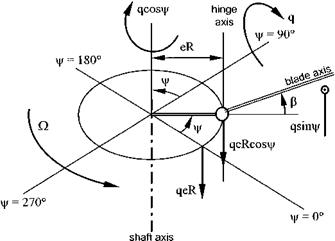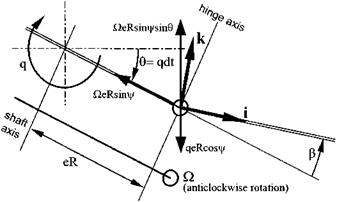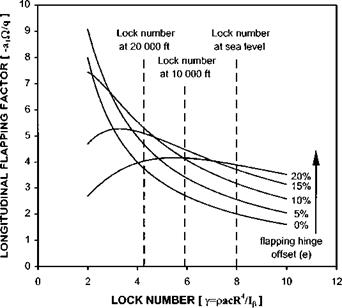Vertical velocity derivatives
These are also known as the angle of attack derivatives as this is proportional to the vertical velocity for a fixed wing aircraft at a given forward speed. Angle of attack is not quite so clearly defined for a helicopter, but the derivatives are still known by either name. The derivatives are Xw (or X„), Zw (or Z„), Mw (or Ma) and the ‘downwash lag’ derivative Mw.
(1) Forward force due to vertical speed (Xw). The force Xw is usually small and insignificant and has little or no effect on either the static or dynamic stability characteristics of the aircraft.
(2) Vertical force due to vertical speed (Zw). An increase in w means that the helicopter is moving vertically downwards, and this causes an increase in the blade angle of attack. This in turn produces an increase in blade lift as the inflow through the rotor decreases. The consequent increase in rotor thrust tends to nulify the increase in w, and Zw is therefore the vertical damping derivative which is an important vertical response parameter, particularly in the hover and at low forward speeds. The force Zw is always stabilizing (negative) and increases from its value in the hover to reach a limiting value in forward flight.
(3) Pitching moment due to vertical speed (Mw). The moment Mw is a measure of the static stability of the rotor with respect to changes in angle of attack. In the hover Mw is zero, but in forward flight an increase in w produces an effective increase in blade lift which is greater on the advancing blade than on the retreating blade. This causes a backwards tilt of the rotor and a nose-up pitching moment. Consequently, the rotor contribution to Mw is positive and destabilizing. Its value increases approximately linearly with speed. Contributions to Mw also come from the fuselage and the horizontal stabilizer. The former is likely to be destabilizing, whereas the latter will normally be stabilizing. The tailplane will however be ineffective in the hover and at forward speeds when it is working in the downwash from the main rotor.
(4) Pitching moment due to downwash lag (Mw). As the tailplane is a finite distance away from the main rotor and there will be a small delay between initiation of changes in rotor downwash due to angle of attack changes and their arrival at the tailplane. This is often ignored for simplicity.
4.9.1.2 Pitch rate derivatives
Assume that the helicopter is pitching nose-up with a constant angular velocity, q, and that the rotor is in equilibrium and pitching at the same rate. As the rotor may be regarded as a gyroscope it will be subjected to a precessing moment which would normally tend to tilt it to starboard. However, because of the response lag, the rotor actually tilts forward causing longitudinal forces and moments. This is the source of the aerodynamic damping discussed earlier. The derivatives Xq and Zq are usually taken as negligible, so Mq is the only derivative worthy of note. Mq represents the change of pitching moment with changes in pitch rate. This is the ‘pitch damping’ derivative. When the helicopter pitches nose-up there will be a favourable nose-down moment from the main rotor due to this aerodynamic damping. Thus, the rotor contribution to Mq is stabilizing (negative). Also, the angle of attack of the tailplane is changed producing more tailplane lift or less downforce and hence a favourable nose-down pitching moment providing a stabilizing contribution. There will also be a contribution from the fuselage that is usually stabilizing. Most helicopters will also require some form of augmentation of this damping if good handling qualities are to be achieved.
4.9.2 Control derivatives
Movement of the collective lever and fore/aft cyclic will also affect the motion of the helicopter in the longitudinal plane by altering the forces and moments acting. Collective and longitudinal cyclic pitch angles are denoted by 0c and Bl respectively, and their effect can be shown by the use of collective and cyclic control derivatives.
















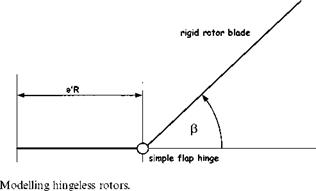
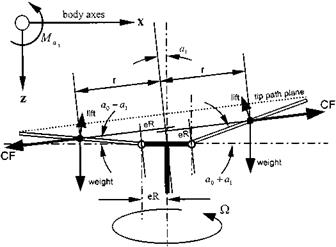

 M = eRmbieR + 2(1 — e)R cos a0
M = eRmbieR + 2(1 — e)R cos a0